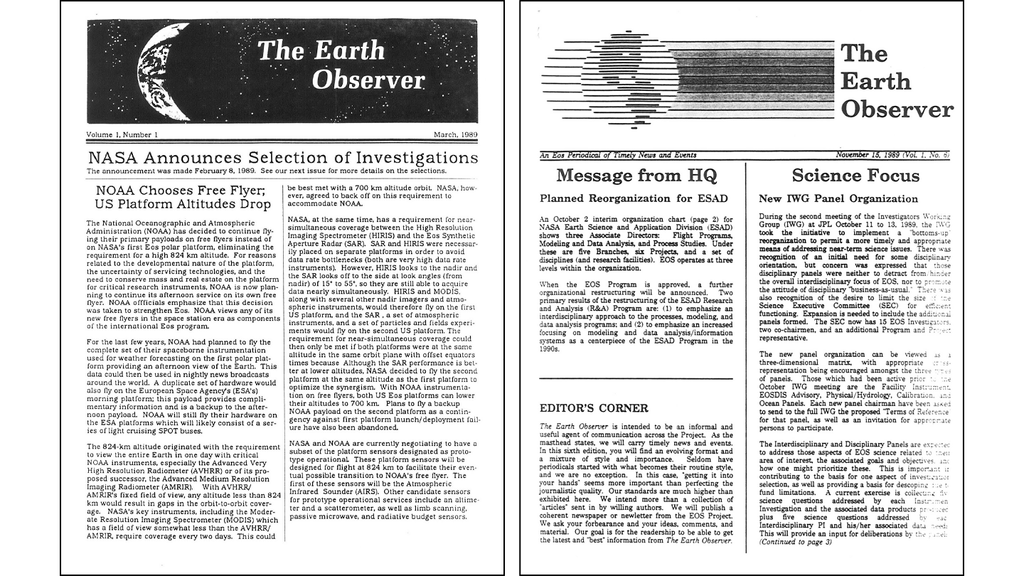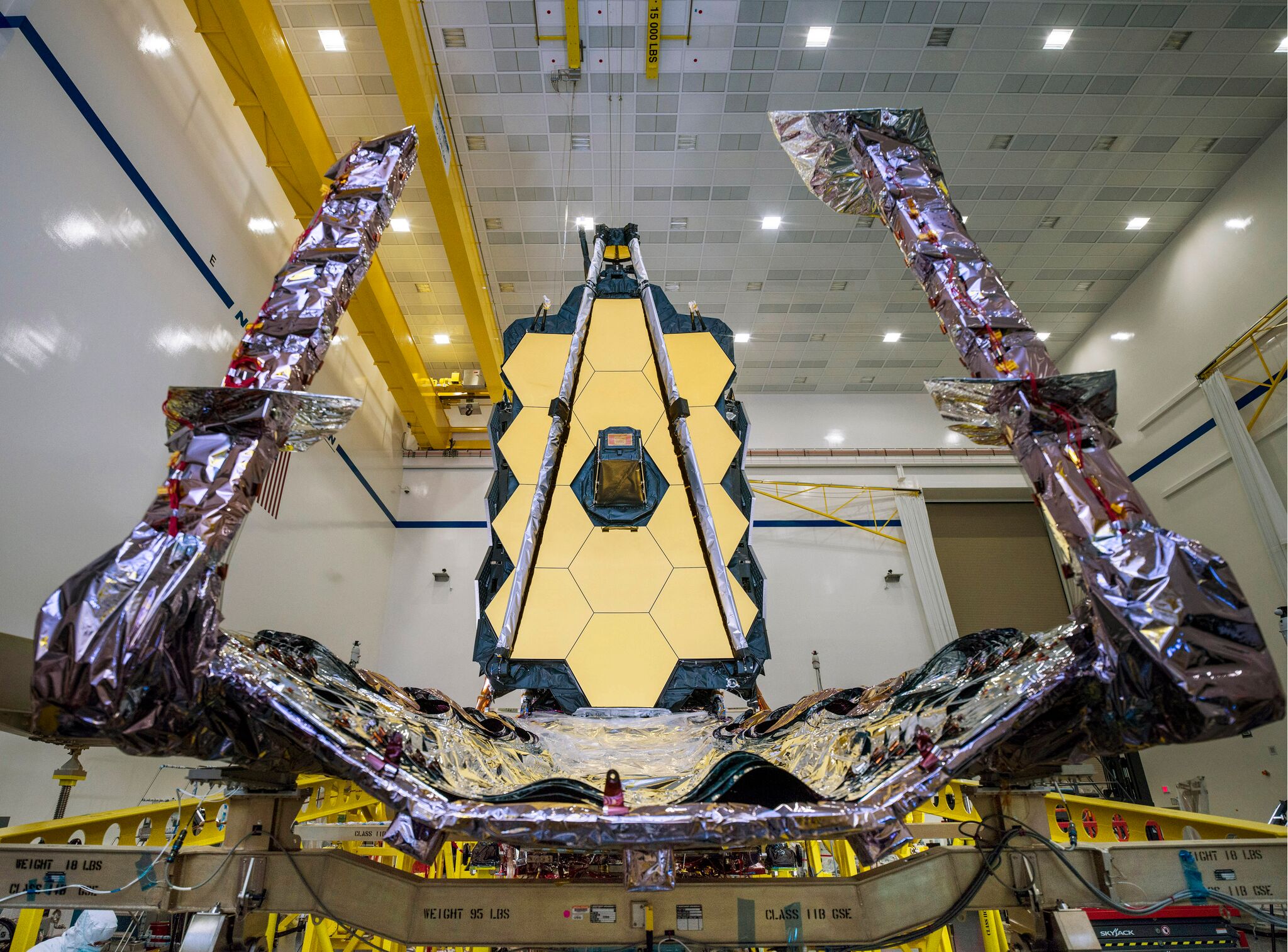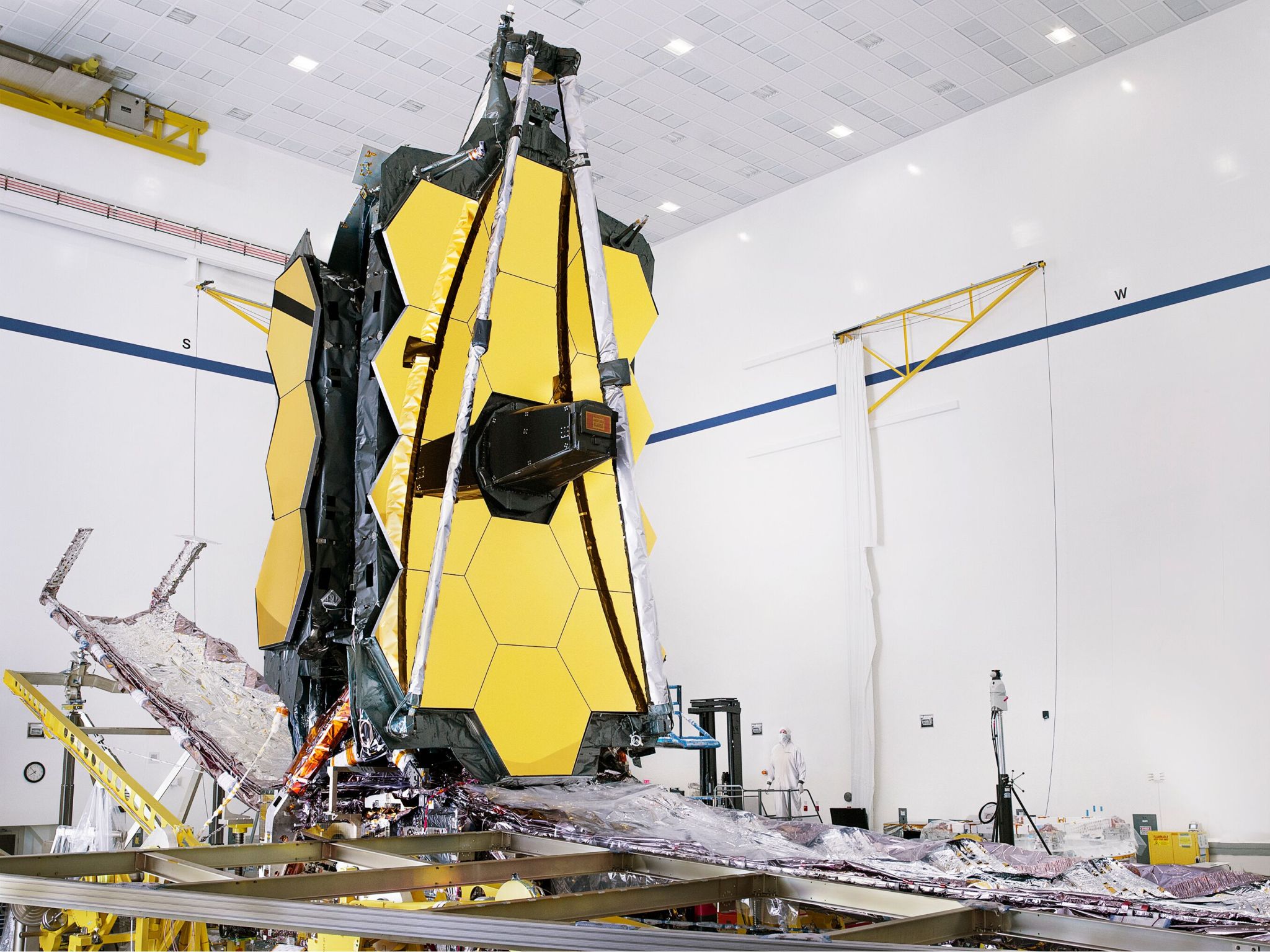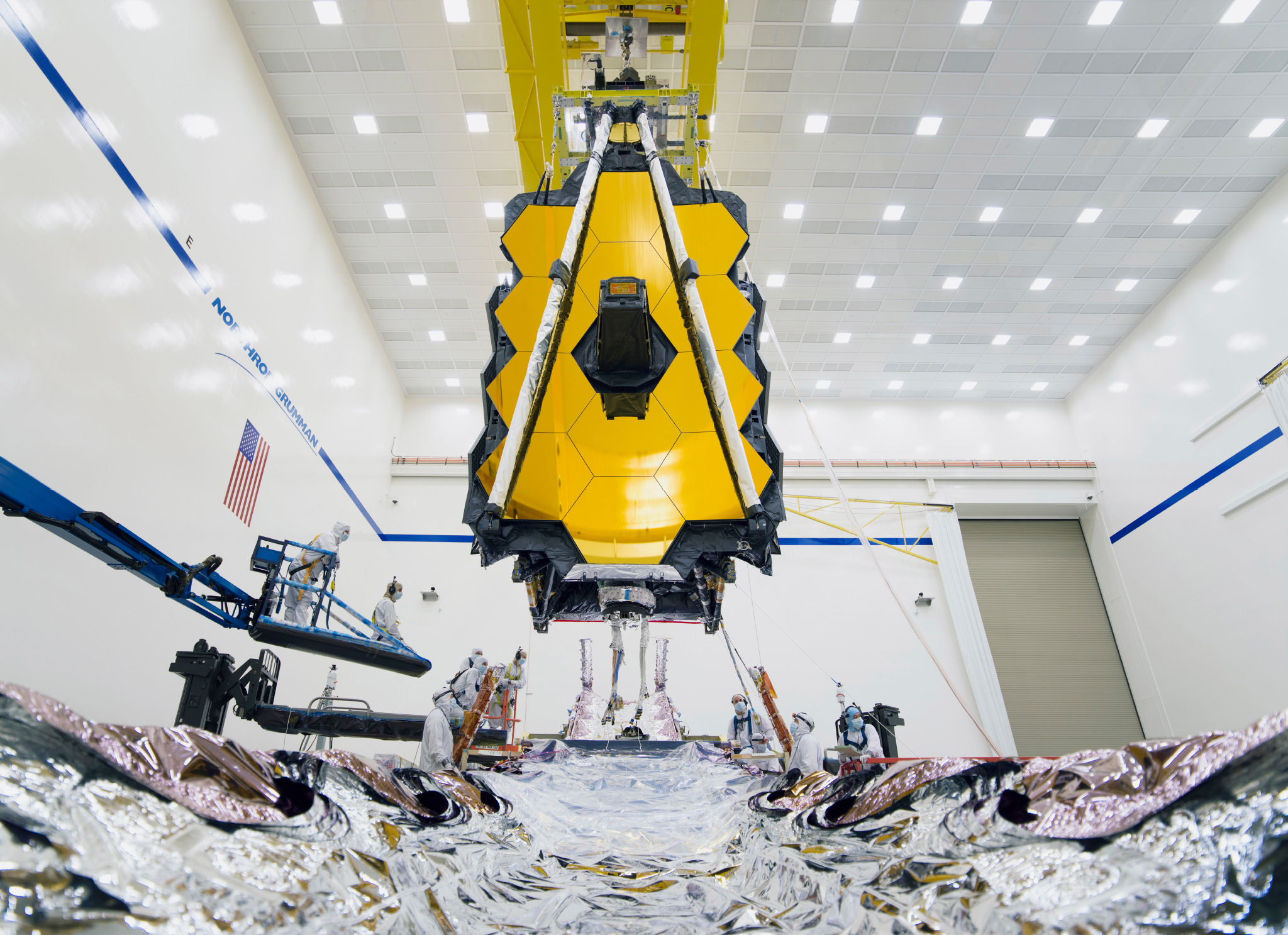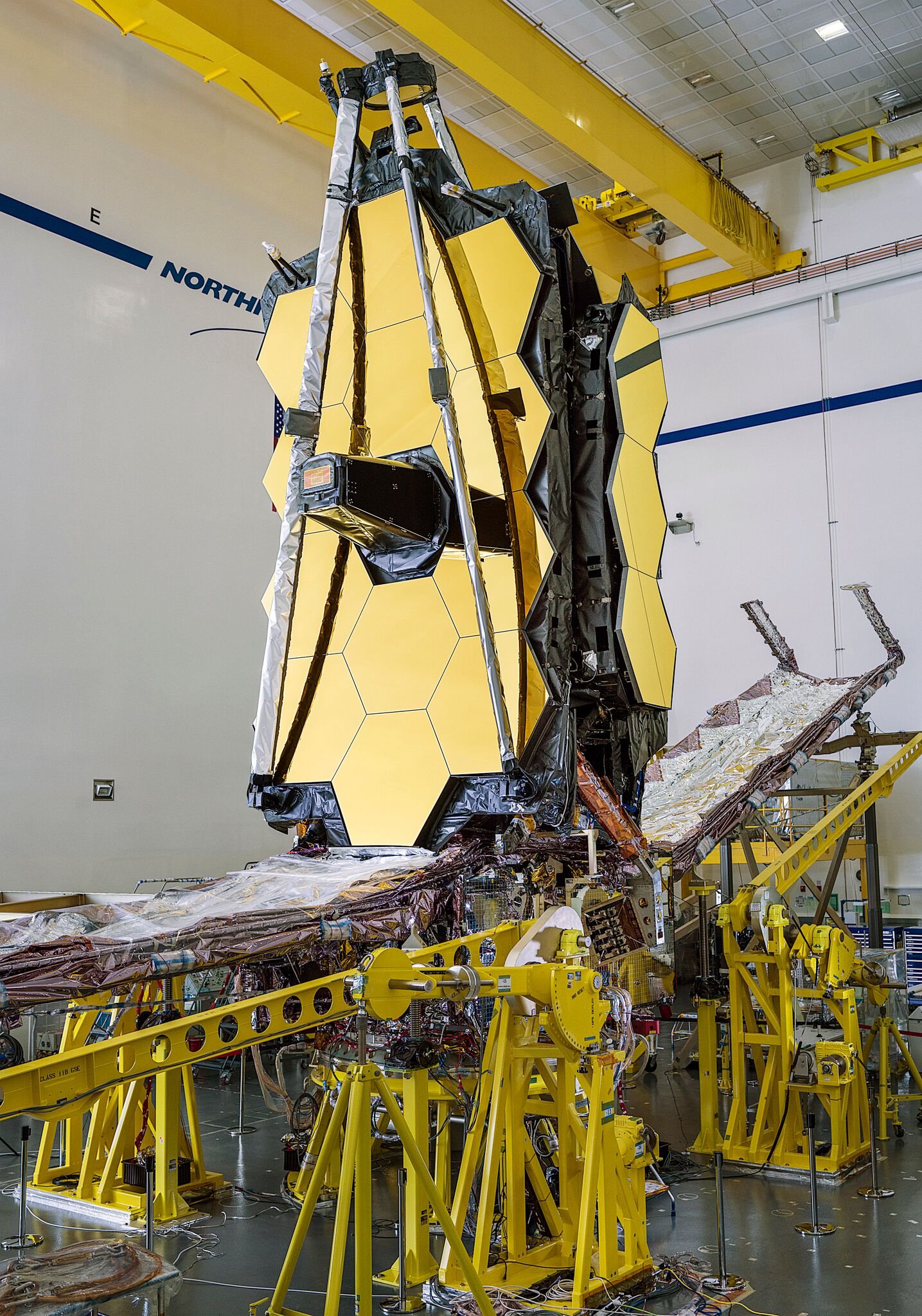Reaching a major milestone, engineers have successfully connected the two halves of NASA’s James Webb Space Telescope for the first time at Northrop Grumman’s facilities in Redondo Beach, California. Once it reaches space, NASA’s most powerful and complex space telescope will explore the cosmos using infrared light, from planets and moons within our solar system to the most distant galaxies.
To combine both halves of Webb, engineers carefully lifted the Webb telescope (which includes the mirrors and science instruments) above the already-combined sunshield and spacecraft using a crane. Team members slowly guided the telescope into place, ensuring that all primary points of contact were perfectly aligned and seated properly. The observatory has been mechanically connected; next steps will be to electrically connect the halves, and then test the electrical connections.
“The assembly of the telescope and its scientific instruments, sunshield and the spacecraft into one observatory represents an incredible achievement by the entire Webb team,” said Bill Ochs, Webb project manager for NASA Goddard Space Flight Center in Greenbelt, Maryland. “This milestone symbolizes the efforts of thousands of dedicated individuals for over more than 20 years across NASA, the European Space Agency, the Canadian Space Agency, Northrop Grumman, and the rest of our industrial and academic partners.”
Next up for Webb testing, engineers will fully deploy the intricate five-layer sunshield, which is designed to keep Webb’s mirrors and scientific instruments cold by blocking infrared light from the Earth, Moon and Sun. The ability of the sunshield to deploy to its correct shape is critical to mission success.
“This is an exciting time to now see all Webb’s parts finally joined together into a single observatory for the very first time,” said Gregory Robinson, the Webb program director at NASA Headquarters in Washington, D.C. “The engineering team has accomplished a huge step forward and soon we will be able to see incredible new views of our amazing universe.”
Both of the telescope’s major components have been tested individually through all of the environments they would encounter during a rocket ride and orbiting mission a million miles away from Earth. Now that Webb is a fully assembled observatory, it will go through additional environmental and deployment testing to ensure mission success. The spacecraft is scheduled to launch in 2021.
Webb will be the world’s premier space science observatory. It will solve mysteries in our solar system, look beyond to distant worlds around other stars, and probe the mysterious structures and origins of our universe and our place in it. Webb is an international project led by NASA with its partners, ESA (European Space Agency), and the Canadian Space Agency.
By Thaddeus Cesari
NASA’s Goddard Space Flight Center
















